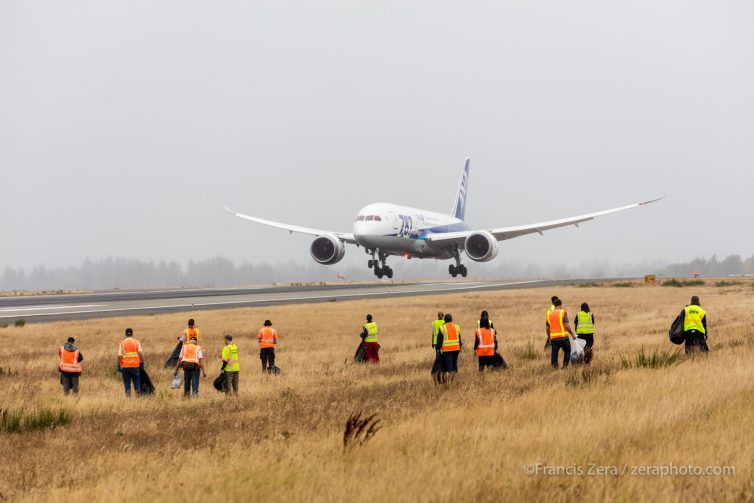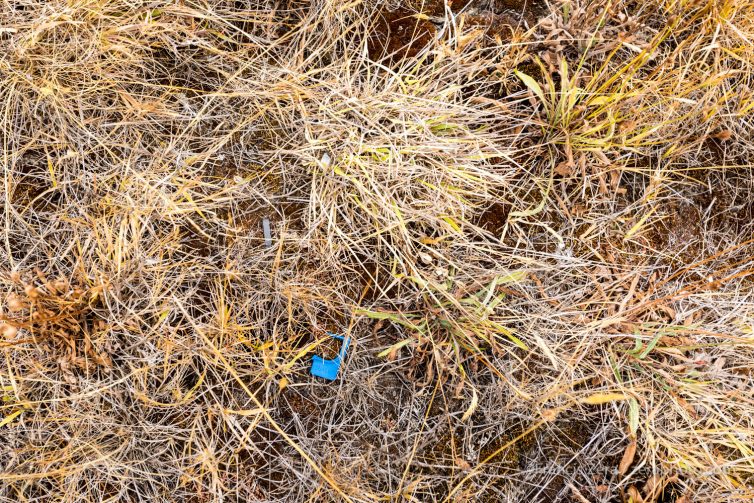
An ANA 787-8 made a graceful landing as it arrived from Tokyo’s Narita International Airport (NRT) during the 2016 FOD walk
FOD (foreign object debris) is the scourge of airport operations. FOD includes the mundane as well as the unusual: baggage-claim tickets, random bits of plastic, airplane parts, dead animals, rocks, and clumps of loose dead vegetation. Keeping runways and taxiways clear of FOD is a seemingly never-ending battle; airports’ operations areas are festooned with signs both warning of the dangers of FOD and reminding airport personnel to constantly be watching for, and picking up, such trash.

Items as seemingly innocuous as a scrap of plastic hold the potential to damage an aircraft
According to a 2013 FAA fact sheet, ’œFOD can be ingested in an aircraft engine, which can result in damage to the aircraft or cause an accident. It can damage or become lodged in aircraft operating mechanisms or cut aircraft tires. Boeing estimates that FOD causes an estimated $4 billion in damage to engines and aircraft taken out of service each year.’
Wikipedia’s entry on FOD claims the total is significantly higher, citing a now-offline 2008 report claiming $13 billion in direct and indirect costs to the aviation industry as a whole. In either instance, FOD damage is very expensive, and it makes sense that every airport have a FOD management plan.